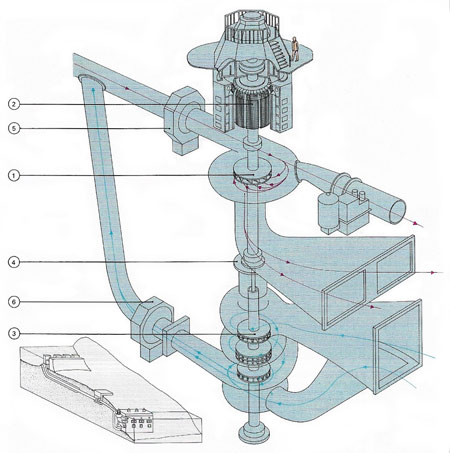pumped water storage

A pumped-storage hydroelectric system uses turbines to generate electricity at peak times and to pump water back behind a dam when demand is low. A reaction water turbine (1) drives an electric generator (2). When the centrifugal pumps (3) are uncoupled the machine acts as a normal hydroelectric generator. But when the geared coupling (4) is engaged the water turbine drives the pump up to operating speed. Then the generator is connected to the electricity supply whence it acts as a motor. The turbine valve (5) is closed, the pump valve (6) is opened and water is pumped back behind the dam, adding to the volume of stored water available for later hydroelectric generation.
Pumped water storage, also known as pumped hydropower, is a type of energy storage and power generating facility that pumps water to a storage reservoir during off-peak periods, and uses the stored water (by allowing it to fall through a hydro turbine) to generate power during peak periods. The pumping energy is typically supplied by lower cost base power capacity, and the peaking power capacity is of greater value, even though there is a net loss of power in the process.
